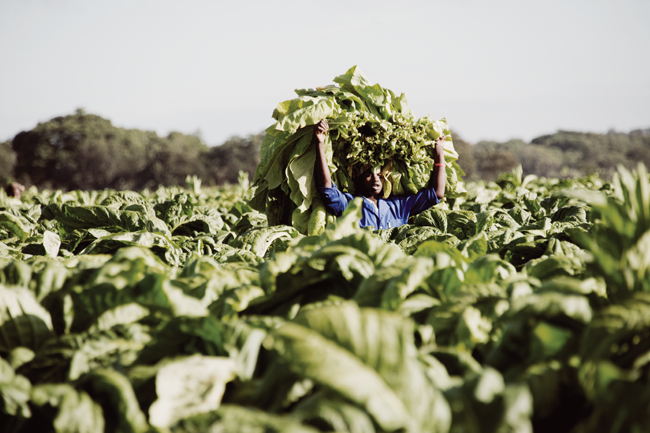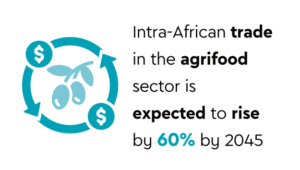Although it is early days yet in the reconstruction of a post-Mugabe Zimbabwe, the new leadership is making all the right noises. Speaking at the WEF in Davos in January, new president Emmerson Mnangagwa, announced that the country was ‘open for business’.
Even before that, on his first international visit – to South Africa before last Christmas – Mnangagwa said that Zimbabwe’s laws, especially its onerous indigenisation policies, need to be ‘revisited’ and that his focus would be on economics and trade co-operation.
Mnangagwa was put in power by the Zimbabwean military in early December after widespread peaceful public protests in the country’s capital and economic hub, Harare. The man he replaced, Robert Mugabe, is widely regarded as having taken the country, once known as ‘Africa’s breadbasket’, to the brink of ruin, if not beyond. Mnangagwa’s challenge is to undo Mugabe’s legacy and revitalise the investment climate. The question is whether he can overcome the vested interests that emerged during the Mugabe era.
The story of Zimbabwe’s decline is well known. Mugabe’s 37-year rule saw the per capita income of the country fall from US$1 106 in 1982 to a mere US$325 by 2008. Over time he built a military-dominated patronage system, so heavily dependent on government finances that the public sector now accounts for 50% of the GDP.
At the same time, Mugabe oversaw the collapse of agricultural production, which accounted for a third of the country’s export earnings before the farms were seized from mostly white owners around 2000. This had a knock-on effect on manufacturing, much of which was concerned with agri-processing.
Mining has languished, investment drying up in the face of threat of expropriation in terms of a 51% indigenous ownership requirement, introduced in 2008.
Economic collapse affected all areas of life. The World Bank notes that ‘health, education, and other basic services – once regional models – largely collapsed’. In 2015, the country was ranked 154 (out of 187) on the UN Human Development Indicators list. The combination of poverty and brutal repression saw an exodus estimated at between 1 million and 3 million, mostly to neighbouring South Africa, where they were welcomed by employers as an educated and hard-working addition to the labour force.
Getting some of these highly able individuals back into gainful employment inside the country is one of the new Zimbabwean leadership’s big challenges. But as with every reformist step, there is a trade-off involved. Many poor Zimbabwean families are heavily dependent on remittances from relatives outside the country, valued at US$1.5 billion last year. If this were to dry up, the money liquidity of Zimbabwe’s economy would be affected as its ‘dollarised economy’ – the US dollar is used as the official currency after the local currency was destroyed by the massive inflation in 2007/8 – is prone to ‘leaking’ as local citizens seek economic security by acquiring foreign assets.

Since money and finances are the foremost issue facing the country, it is significant that Zimbabwe made the move this year to secure assistance from the International Monetary Fund (IMF). Christine Lagarde, IMF head, met Mnangagwa at Davos and pledged support for economic reform. The IMF has advised Zimbabwe to cut public sector wages, reduce farm subsidies, improve transparency in the mining sector and reach agreement on compensation for farmers previously stripped of ownership.
A non-negotiable as far as the IMF is concerned is that the new government prove its mandate at the polls. It was, after all, installed by what amounted to a military coup, albeit a popular one. Mnangagwa has said that elections will be held in July or August this year. Although his party – the ruling Zimbabwe African National Union-Patriotic Front (Zanu-PF) – is regarded as the firm favourite, with the opposition parties chaotically disposed at present, Mnangagwa will be hoping for a quick return from his plans for liberalisation in order to enhance his standing at the hustings.
Some of the quick wins Mnangagwa is looking for are evident in the measures announced so far. In December last year, in his 2018 budget, Minister of Finance Patrick Chinamasa declared that the 51% indigenous ownership requirement had been lifted, except for in the platinum and diamond subsectors.
Mining, with its long lead times, would not ordinarily be a sector associated with quick wins. But Zimbabwe is a potential treasure trove of mineral wealth with an established industry on which to build. Much of the country’s mineral wealth is tucked into a geological formation, known as the Great Dyke, which runs diagonally across Zimbabwe from north-east to south-west. It has the world’s second-largest platinum and chrome reserves (after South Africa), and substantial deposits of gold, nickel, diamonds, lithium and coal.
The faltering industry has, however, massively underproduced. At a landmark mining investment conference in Harare in March, the audience heard that the country’s 800 mines have the potential to generate US$18 billion a year against a current output of US$2 billion. The analysis, by UK-based consultancy Mining Report, argued that ‘Zimbabwe has turned over a new leaf and announced new investor-friendly mining policies’.
Quite how far these new policies go remains to be seen. The benchmark may well be how Zimbabwe deals with its recently found diamond wealth. An extremely rich diamond pipe was discovered at Marange in the east of the country in 2006 and nationalised in 2008. This involved a violent period of dispossessing artisanal miners and where the privatisation of the diamond diggings simply transferred ownership directly to eight companies in the hands of current or former high-ranking Zimbabwean military officers.
Temba Mliswa, chairman of the mines and energy portfolio committee in the Zimbabwean Parliament believes that some US$15 billion in diamond revenues has been stolen.
Properly exploited diamond wealth is the basis of the long economic growth run enjoyed by Zimbabwe’s neighbour, Botswana. Zimbabwe could enjoy a similar pay-off but will have to wrest control of the deposits back from the private interests who now control the diggings. Leaving the indigenisation requirement in place for this sector could be a sign that Mnangagwa is simply ‘parking’ the issue, until at least after this year’s elections.
However, a significant mining deal announced this year is the Karo Resources-owned platinum mine west of Harare, which will require investment of US$4.2 billion. It was reported in March that a ‘Cypriot investor’ had signed up and was looking to start mining later this year.
The revival of Zimbabwe’s economy will be made a great deal easier by one or two large injections of investment capital and mining is the sector where this is most likely to happen. Such an inflow could turn the country’s balance of payments from deficit to surplus in a stroke. At the same time, investment can help revitalise confidence in property rights so badly eroded by Mugabe’s farm seizures.
Zimbabwe has taken the first tentative steps towards establishing a better future. The next few months are critical. If Mnangagwa can sustain the forward momentum while simultaneously democratising the country’s mandate, the upside potential is massive.















